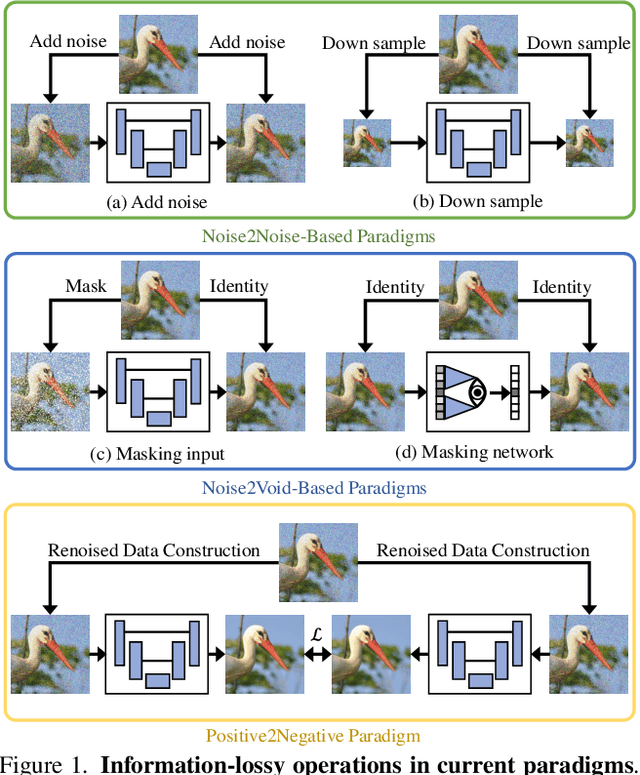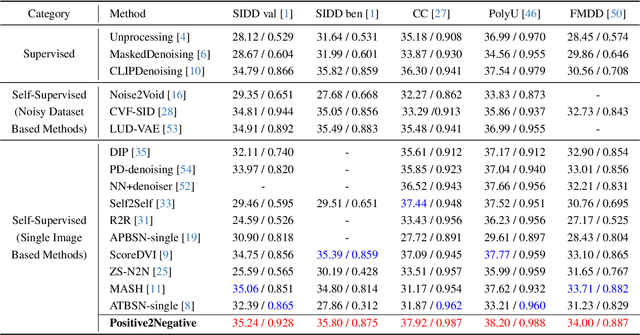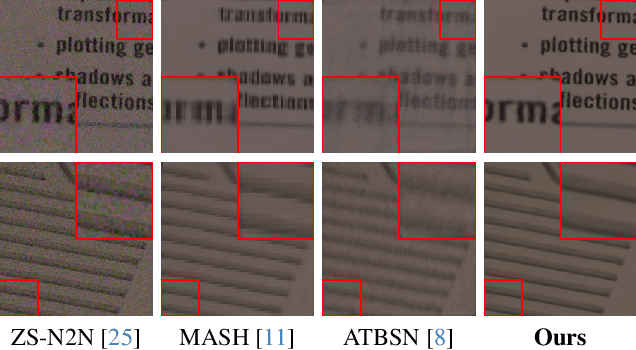Zhiyuan Xu
FreqPolicy: Efficient Flow-based Visuomotor Policy via Frequency Consistency
Jun 10, 2025Abstract:Generative modeling-based visuomotor policies have been widely adopted in robotic manipulation attributed to their ability to model multimodal action distributions. However, the high inference cost of multi-step sampling limits their applicability in real-time robotic systems. To address this issue, existing approaches accelerate the sampling process in generative modeling-based visuomotor policies by adapting acceleration techniques originally developed for image generation. Despite this progress, a major distinction remains: image generation typically involves producing independent samples without temporal dependencies, whereas robotic manipulation involves generating time-series action trajectories that require continuity and temporal coherence. To effectively exploit temporal information in robotic manipulation, we propose FreqPolicy, a novel approach that first imposes frequency consistency constraints on flow-based visuomotor policies. Our work enables the action model to capture temporal structure effectively while supporting efficient, high-quality one-step action generation. We introduce a frequency consistency constraint that enforces alignment of frequency-domain action features across different timesteps along the flow, thereby promoting convergence of one-step action generation toward the target distribution. In addition, we design an adaptive consistency loss to capture structural temporal variations inherent in robotic manipulation tasks. We assess FreqPolicy on 53 tasks across 3 simulation benchmarks, proving its superiority over existing one-step action generators. We further integrate FreqPolicy into the vision-language-action (VLA) model and achieve acceleration without performance degradation on the 40 tasks of Libero. Besides, we show efficiency and effectiveness in real-world robotic scenarios with an inference frequency 93.5Hz. The code will be publicly available.
Challenger: Affordable Adversarial Driving Video Generation
May 21, 2025



Abstract:Generating photorealistic driving videos has seen significant progress recently, but current methods largely focus on ordinary, non-adversarial scenarios. Meanwhile, efforts to generate adversarial driving scenarios often operate on abstract trajectory or BEV representations, falling short of delivering realistic sensor data that can truly stress-test autonomous driving (AD) systems. In this work, we introduce Challenger, a framework that produces physically plausible yet photorealistic adversarial driving videos. Generating such videos poses a fundamental challenge: it requires jointly optimizing over the space of traffic interactions and high-fidelity sensor observations. Challenger makes this affordable through two techniques: (1) a physics-aware multi-round trajectory refinement process that narrows down candidate adversarial maneuvers, and (2) a tailored trajectory scoring function that encourages realistic yet adversarial behavior while maintaining compatibility with downstream video synthesis. As tested on the nuScenes dataset, Challenger generates a diverse range of aggressive driving scenarios-including cut-ins, sudden lane changes, tailgating, and blind spot intrusions-and renders them into multiview photorealistic videos. Extensive evaluations show that these scenarios significantly increase the collision rate of state-of-the-art end-to-end AD models (UniAD, VAD, SparseDrive, and DiffusionDrive), and importantly, adversarial behaviors discovered for one model often transfer to others.
HACTS: a Human-As-Copilot Teleoperation System for Robot Learning
Mar 31, 2025Abstract:Teleoperation is essential for autonomous robot learning, especially in manipulation tasks that require human demonstrations or corrections. However, most existing systems only offer unilateral robot control and lack the ability to synchronize the robot's status with the teleoperation hardware, preventing real-time, flexible intervention. In this work, we introduce HACTS (Human-As-Copilot Teleoperation System), a novel system that establishes bilateral, real-time joint synchronization between a robot arm and teleoperation hardware. This simple yet effective feedback mechanism, akin to a steering wheel in autonomous vehicles, enables the human copilot to intervene seamlessly while collecting action-correction data for future learning. Implemented using 3D-printed components and low-cost, off-the-shelf motors, HACTS is both accessible and scalable. Our experiments show that HACTS significantly enhances performance in imitation learning (IL) and reinforcement learning (RL) tasks, boosting IL recovery capabilities and data efficiency, and facilitating human-in-the-loop RL. HACTS paves the way for more effective and interactive human-robot collaboration and data-collection, advancing the capabilities of robot manipulation.
ChatVLA: Unified Multimodal Understanding and Robot Control with Vision-Language-Action Model
Feb 21, 2025Abstract:Humans possess a unified cognitive ability to perceive, comprehend, and interact with the physical world. Why can't large language models replicate this holistic understanding? Through a systematic analysis of existing training paradigms in vision-language-action models (VLA), we identify two key challenges: spurious forgetting, where robot training overwrites crucial visual-text alignments, and task interference, where competing control and understanding tasks degrade performance when trained jointly. To overcome these limitations, we propose ChatVLA, a novel framework featuring Phased Alignment Training, which incrementally integrates multimodal data after initial control mastery, and a Mixture-of-Experts architecture to minimize task interference. ChatVLA demonstrates competitive performance on visual question-answering datasets and significantly surpasses state-of-the-art vision-language-action (VLA) methods on multimodal understanding benchmarks. Notably, it achieves a six times higher performance on MMMU and scores 47.2% on MMStar with a more parameter-efficient design than ECoT. Furthermore, ChatVLA demonstrates superior performance on 25 real-world robot manipulation tasks compared to existing VLA methods like OpenVLA. Our findings highlight the potential of our unified framework for achieving both robust multimodal understanding and effective robot control.
The dark deep side of DeepSeek: Fine-tuning attacks against the safety alignment of CoT-enabled models
Feb 03, 2025
Abstract:Large language models are typically trained on vast amounts of data during the pre-training phase, which may include some potentially harmful information. Fine-tuning attacks can exploit this by prompting the model to reveal such behaviours, leading to the generation of harmful content. In this paper, we focus on investigating the performance of the Chain of Thought based reasoning model, DeepSeek, when subjected to fine-tuning attacks. Specifically, we explore how fine-tuning manipulates the model's output, exacerbating the harmfulness of its responses while examining the interaction between the Chain of Thought reasoning and adversarial inputs. Through this study, we aim to shed light on the vulnerability of Chain of Thought enabled models to fine-tuning attacks and the implications for their safety and ethical deployment.
ACL-QL: Adaptive Conservative Level in Q-Learning for Offline Reinforcement Learning
Dec 22, 2024Abstract:Offline Reinforcement Learning (RL), which operates solely on static datasets without further interactions with the environment, provides an appealing alternative to learning a safe and promising control policy. The prevailing methods typically learn a conservative policy to mitigate the problem of Q-value overestimation, but it is prone to overdo it, leading to an overly conservative policy. Moreover, they optimize all samples equally with fixed constraints, lacking the nuanced ability to control conservative levels in a fine-grained manner. Consequently, this limitation results in a performance decline. To address the above two challenges in a united way, we propose a framework, Adaptive Conservative Level in Q-Learning (ACL-QL), which limits the Q-values in a mild range and enables adaptive control on the conservative level over each state-action pair, i.e., lifting the Q-values more for good transitions and less for bad transitions. We theoretically analyze the conditions under which the conservative level of the learned Q-function can be limited in a mild range and how to optimize each transition adaptively. Motivated by the theoretical analysis, we propose a novel algorithm, ACL-QL, which uses two learnable adaptive weight functions to control the conservative level over each transition. Subsequently, we design a monotonicity loss and surrogate losses to train the adaptive weight functions, Q-function, and policy network alternatively. We evaluate ACL-QL on the commonly used D4RL benchmark and conduct extensive ablation studies to illustrate the effectiveness and state-of-the-art performance compared to existing offline DRL baselines.
Positive2Negative: Breaking the Information-Lossy Barrier in Self-Supervised Single Image Denoising
Dec 21, 2024



Abstract:Image denoising enhances image quality, serving as a foundational technique across various computational photography applications. The obstacle to clean image acquisition in real scenarios necessitates the development of self-supervised image denoising methods only depending on noisy images, especially a single noisy image. Existing self-supervised image denoising paradigms (Noise2Noise and Noise2Void) rely heavily on information-lossy operations, such as downsampling and masking, culminating in low quality denoising performance. In this paper, we propose a novel self-supervised single image denoising paradigm, Positive2Negative, to break the information-lossy barrier. Our paradigm involves two key steps: Renoised Data Construction (RDC) and Denoised Consistency Supervision (DCS). RDC renoises the predicted denoised image by the predicted noise to construct multiple noisy images, preserving all the information of the original image. DCS ensures consistency across the multiple denoised images, supervising the network to learn robust denoising. Our Positive2Negative paradigm achieves state-of-the-art performance in self-supervised single image denoising with significant speed improvements. The code will be released to the public.
RoboMIND: Benchmark on Multi-embodiment Intelligence Normative Data for Robot Manipulation
Dec 18, 2024Abstract:Developing robust and general-purpose robotic manipulation policies is a key goal in the field of robotics. To achieve effective generalization, it is essential to construct comprehensive datasets that encompass a large number of demonstration trajectories and diverse tasks. Unlike vision or language data that can be collected from the Internet, robotic datasets require detailed observations and manipulation actions, necessitating significant investment in hardware-software infrastructure and human labor. While existing works have focused on assembling various individual robot datasets, there remains a lack of a unified data collection standard and insufficient diversity in tasks, scenarios, and robot types. In this paper, we introduce RoboMIND (Multi-embodiment Intelligence Normative Data for Robot manipulation), featuring 55k real-world demonstration trajectories across 279 diverse tasks involving 61 different object classes. RoboMIND is collected through human teleoperation and encompasses comprehensive robotic-related information, including multi-view RGB-D images, proprioceptive robot state information, end effector details, and linguistic task descriptions. To ensure dataset consistency and reliability during policy learning, RoboMIND is built on a unified data collection platform and standardized protocol, covering four distinct robotic embodiments. We provide a thorough quantitative and qualitative analysis of RoboMIND across multiple dimensions, offering detailed insights into the diversity of our datasets. In our experiments, we conduct extensive real-world testing with four state-of-the-art imitation learning methods, demonstrating that training with RoboMIND data results in a high manipulation success rate and strong generalization. Our project is at https://x-humanoid-robomind.github.io/.
Diffusion-based Visual Anagram as Multi-task Learning
Dec 03, 2024



Abstract:Visual anagrams are images that change appearance upon transformation, like flipping or rotation. With the advent of diffusion models, generating such optical illusions can be achieved by averaging noise across multiple views during the reverse denoising process. However, we observe two critical failure modes in this approach: (i) concept segregation, where concepts in different views are independently generated, which can not be considered a true anagram, and (ii) concept domination, where certain concepts overpower others. In this work, we cast the visual anagram generation problem in a multi-task learning setting, where different viewpoint prompts are analogous to different tasks,and derive denoising trajectories that align well across tasks simultaneously. At the core of our designed framework are two newly introduced techniques, where (i) an anti-segregation optimization strategy that promotes overlap in cross-attention maps between different concepts, and (ii) a noise vector balancing method that adaptively adjusts the influence of different tasks. Additionally, we observe that directly averaging noise predictions yields suboptimal performance because statistical properties may not be preserved, prompting us to derive a noise variance rectification method. Extensive qualitative and quantitative experiments demonstrate our method's superior ability to generate visual anagrams spanning diverse concepts.
Discrete Policy: Learning Disentangled Action Space for Multi-Task Robotic Manipulation
Sep 27, 2024



Abstract:Learning visuomotor policy for multi-task robotic manipulation has been a long-standing challenge for the robotics community. The difficulty lies in the diversity of action space: typically, a goal can be accomplished in multiple ways, resulting in a multimodal action distribution for a single task. The complexity of action distribution escalates as the number of tasks increases. In this work, we propose \textbf{Discrete Policy}, a robot learning method for training universal agents capable of multi-task manipulation skills. Discrete Policy employs vector quantization to map action sequences into a discrete latent space, facilitating the learning of task-specific codes. These codes are then reconstructed into the action space conditioned on observations and language instruction. We evaluate our method on both simulation and multiple real-world embodiments, including both single-arm and bimanual robot settings. We demonstrate that our proposed Discrete Policy outperforms a well-established Diffusion Policy baseline and many state-of-the-art approaches, including ACT, Octo, and OpenVLA. For example, in a real-world multi-task training setting with five tasks, Discrete Policy achieves an average success rate that is 26\% higher than Diffusion Policy and 15\% higher than OpenVLA. As the number of tasks increases to 12, the performance gap between Discrete Policy and Diffusion Policy widens to 32.5\%, further showcasing the advantages of our approach. Our work empirically demonstrates that learning multi-task policies within the latent space is a vital step toward achieving general-purpose agents.
 Add to Chrome
Add to Chrome Add to Firefox
Add to Firefox Add to Edge
Add to Edge